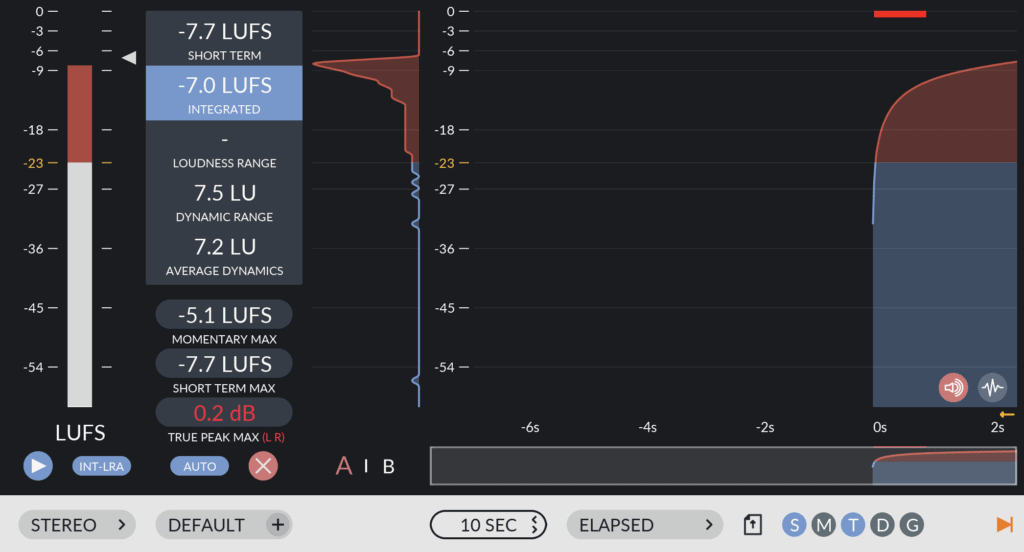Loudness streaming refers to the process of delivering audio content over the internet on platforms such as music streaming services, video streaming platforms, and podcasts. With the rise in popularity of these platforms, it has become crucial to ensure consistent loudness levels across different devices and content, leading to the emergence of loudness normalization and measurement techniques.
One such technique used to measure loudness is LUFS (Loudness Units Full Scale). LUFS is a standard measurement unit that determines the perceived loudness of audio content. It takes into account both the average and dynamic range of the audio signal to provide a more accurate representation of loudness.
How is Loudness Measured?
Measuring loudness involves analyzing the audio signal and quantifying its perceived loudness level. This is important because different audio content can have varying loudness levels, and inconsistent loudness between tracks can disrupt the listening experience.
Traditional measurement methods, such as peak normalization based on the highest peak level in the audio, do not accurately reflect how loud the audio actually sounds. LUFS, on the other hand, considers human perception and takes into account various factors to provide a more accurate loudness measurement.
The loudness measurement process involves analyzing the audio signal using filters that mimic the human ear’s frequency response. These filters divide the audio signal into different frequency bands, and the energy of each band is measured over time.
Once the audio signal has been divided into frequency bands, it is weighted according to the equal loudness contour, which represents how the human ear perceives different frequencies at different sound pressure levels. This weighting compensates for the ear’s non-linear response to different frequencies.
The weighted energy of each frequency band is then averaged over time to calculate the Integrated Loudness. This value is expressed in LUFS and represents the perceived loudness of the entire audio track. LUFS measurements also take into account short-term and momentary loudness levels to capture both the average and dynamic loudness of the content.

Credit: www.masteringthemix.com

Credit: www.edmprod.com
The Importance of LUFS in Loudness Streaming
Loudness normalization using LUFS has become a crucial aspect of streaming platforms to ensure a consistent listening experience for users. Without loudness normalization, users may experience abrupt changes in volume when switching between tracks, causing frustration and discomfort.
By implementing loudness normalization using LUFS, streaming platforms can maintain a consistent loudness level across all content. This means users can enjoy their favorite tracks, podcasts, and videos without constantly adjusting the volume.
Advantages of LUFS Measurement
LUFS measurement offers several advantages over traditional peak level normalization:
- Accuracy: LUFS provides a more accurate representation of perceived loudness, taking into account human perception and dynamic range.
- Consistency: With LUFS loudness normalization, content from various sources can be played back at a consistent loudness level, regardless of the original recording levels.
- Cross-Platform Compatibility: LUFS-based loudness normalization ensures that audio content sounds consistent across different devices and platforms.
- User Satisfaction: By eliminating drastic volume changes between tracks, users can enjoy a seamless listening experience without constantly adjusting the volume.
Frequently Asked Questions On What Is Loudness Streaming And How Is It Measured With Lufs?
What Is Loudness Streaming?
Loudness streaming refers to the consistent volume level of audio during playback on digital platforms.
Why Is Loudness Streaming Important?
Maintaining a consistent loudness level ensures a pleasant and uniform listening experience for the audience.
How Is Loudness Measured With Lufs?
Loudness is measured using LUFS (Loudness Units Relative to Full Scale), which quantifies perceived loudness levels in audio content.
What Role Does Lufs Play In Audio Mastering?
LUFS helps audio engineers optimize the loudness of audio content for various streaming platforms, ensuring consistent playback volume.
Conclusion
Loudness streaming and the measurement of loudness using LUFS have revolutionized the way audio content is delivered and consumed on streaming platforms. LUFS provides a more accurate measurement of perceived loudness, ensuring a consistent and enjoyable listening experience for users.
By implementing loudness normalization based on LUFS, streaming platforms can eliminate the annoyance of inconsistent volume levels and allow users to focus on the content they love. As a result, content creators and consumers alike can benefit from a more enjoyable and immersive audio experience.